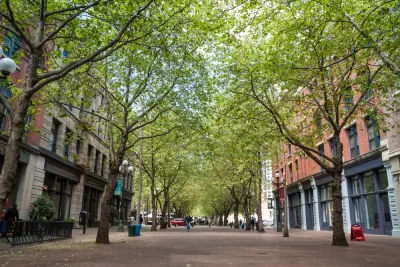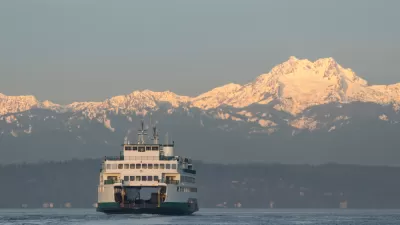Seattle shows how new buildings and new trees can be added to a city simultaneously—in fact, neighborhoods adding new buildings are maintaining its urban tree canopy while static single-family neighborhoods are losing trees.

Dan Bertolet shares news about Seattle's effort to grow and maintain its tree canopy even while building new residential and commercial buildings to keep pace with its rapid growth. There's a catch to the consequences of Seattle's population and economic growth.
Seattle’s best new data [pdf] on the change in tree canopy over time does show a 6 percent decline between 2007 and 2015. Here’s the catch, though: most of the confirmed tree loss happened on land reserved for detached houses, the single-family zones that cover over half the city but where population has barely budged for decades.
Meanwhile, the same study found no statistically significant change in tree canopy [pdf] where the growth actually has been happening: the land zoned for commercial buildings and multifamily housing that absorbed the vast majority of Seattle’s new apartments, offices, and stores.
Bertolet cites the data to build an argument against some opponents of development who would use trees as a prop in a narrative about he destructive consequences of urban infill as the city reconsiders its tree ordinance. "Tree preservation rules that would sacrifice new urban homes—that is, housing that can accommodate a lot of people on a small amount of land—becomes even more indefensible when you factor in the resulting shift of development pressure toward places where low-density housing construction obliterates far more trees," writes Bertolet.
The article then expands its purview to include analysis from Treepedia's Green View Index, which "quantifies how much tree cover a person at street level experiences," according to Bertolet. That tool allows comparisons between Seattle and other cities like Portland, Sacramento, Los Angeles, and Vancouver, British Columbia.
Bertolet's comprehensive, feature-length examination of Seattle's tree canopy didn't go unnoticed in Portland either. Rachel Monahan and Michael Andersen both picked up the story and applied its lessons to Portland.
FULL STORY: No, Seattle's Growth Boom Is Not a Tree Apocalypse

Alabama: Trump Terminates Settlements for Black Communities Harmed By Raw Sewage
Trump deemed the landmark civil rights agreement “illegal DEI and environmental justice policy.”

Study: Maui’s Plan to Convert Vacation Rentals to Long-Term Housing Could Cause Nearly $1 Billion Economic Loss
The plan would reduce visitor accommodation by 25% resulting in 1,900 jobs lost.

Planetizen Federal Action Tracker
A weekly monitor of how Trump’s orders and actions are impacting planners and planning in America.

Wind Energy on the Rise Despite Federal Policy Reversal
The Trump administration is revoking federal support for renewable energy, but demand for new projects continues unabated.

Passengers Flock to Caltrain After Electrification
The new electric trains are running faster and more reliably, leading to strong ridership growth on the Bay Area rail system.

Texas Churches Rally Behind ‘Yes in God’s Back Yard’ Legislation
Religious leaders want the state to reduce zoning regulations to streamline leasing church-owned land to housing developers.
Urban Design for Planners 1: Software Tools
This six-course series explores essential urban design concepts using open source software and equips planners with the tools they need to participate fully in the urban design process.
Planning for Universal Design
Learn the tools for implementing Universal Design in planning regulations.
Caltrans
Smith Gee Studio
Institute for Housing and Urban Development Studies (IHS)
City of Grandview
Harvard GSD Executive Education
Toledo-Lucas County Plan Commissions
Salt Lake City
NYU Wagner Graduate School of Public Service




























